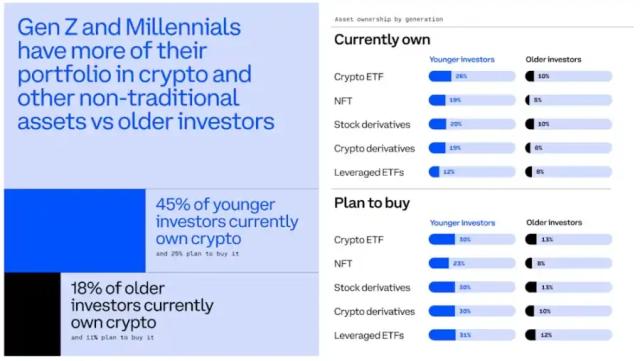As the Good Friday holiday in the US approaches, crypto investors are focusing on four key economic indicators to be released this week. Each indicator has the potential to impact digital asset prices.
From Consumer Price Expectation (CPI) to Initial Jobless Claims, here's how these economic data could affect Bitcoin and the crypto market this week.
Expected to be released on Monday, the New York Federal Reserve's March CPI Survey will reveal how Americans predict price changes in the coming year.
Recent data shows expectations have increased from 3% in January to 3.1% in February, indicating growing inflation concerns. The general forecast among economists is a further increase to 3.3%.
Meanwhile, the University of Michigan consumer survey shows inflation expectations have soared to their highest level since 1981.
"Consumer pessimism about future inflation has reached a new high since 1981, with expectations jumping from 4.9% last month to 6.7% in April. Just three months ago, consumers were predicting inflation at 3.3% for the next year," one user commented.
Combined with market volatility after US government bond yields increased on Friday, this further complicates the Federal Reserve's position. The March Fed meeting minutes show most officials believe inflation will be more persistent, while Trump's trade policies could drive prices higher.
This explains why the Fed remains cautious and continues to assess economic data before adjusting policy.
For the crypto market, high inflation concerns typically boost interest in Bitcoin as a risk hedge due to its limited supply. However, if inflation expectations rise too strongly, fears of Fed tightening could pressure risky assets like digital currencies.
If volatility increases, stablecoin trading volume like USDT might surge as investors seek safe havens. Conversely, if figures are lower than expected, altcoins could benefit as risk appetite returns.
The US Retail Sales report on Wednesday measures consumer spending in March compared to the same period last year and is a crucial indicator of economic health. February data showed a modest increase from 1.9% to 3.1%, but taxes and trade tensions could dampen March results.
"Pay attention to the latest inflation data and mid-week retail sales figures. They could influence the Fed's next move," investor George noted.
Strong retail sales typically indicate high consumer confidence, potentially boosting stock markets and potentially driving coin prices down as investors shift to traditional markets. Conversely, weak sales could reinforce economic recession fears, driving funds into decentralized assets like Bitcoin, Ethereum (ETH), or Solana (SOL).
The correlation between crypto and consumer sentiment is becoming increasingly clear, with Bitcoin often reacting to spending trends. Therefore, this week's market could experience significant volatility.
The Fed's Industrial Production report for March, also to be released on Wednesday, tracks monthly changes in manufacturing, mining, and utility activities.
The 0.7% decline in February raised concerns about economic slowdown, and another projected decrease of 0.2% by economists could signal more serious risks.
For the crypto market, weak industrial production often reinforces the decentralization narrative, driving interest in blockchain projects. However, prolonged decline could cause widespread panic, heavily impacting highly speculative tokens.
Conversely, strong production data could stabilize markets, reducing crypto's appeal as a safe haven but supporting DeFi platforms linked to real assets. Bitcoin Miners, traditionally dependent on energy costs, might face pressure if utility production declines.
"In a capital-intensive industry like Bitcoin mining, policy stability is extremely important, and currently, that is severely lacking," Jaran Mellerud, CEO of Hashlabs Mining, recently shared.
Traders should closely monitor leverage ratios in the futures contract market, as unexpected data could trigger liquidation waves, especially for small-cap coins.
The Initial Jobless Claims report on Thursday reflects new unemployment benefit applications, providing a quick insight into the labor market.
Last week's data showed claims rising to 223,000, compared to 219,000 the previous week, indicating a slightly stagnating labor market. A significant increase could heighten economic recession fears, driving funds into Bitcoin as a value store. However, altcoins might suffer negative impacts due to risk-averse sentiment.
With the Good Friday holiday approaching, market liquidity might decrease, making price fluctuations more intense. Trading volumes during holidays are typically low, making prices more susceptible to overreaction from news or new data.
At the time of writing, Bitcoin was trading at $84,613, down just 0.17% in the past 24 hours.
Disclaimer: This article is for informational purposes only and is not investment advice. Investors should thoroughly research before making decisions. We are not responsible for your investment choices.
Join Telegram: https://t.me/tapchibitcoinvn
Twitter (X): https://twitter.com/tapchibtc_io
Tiktok: https://www.tiktok.com/@tapchibitcoin
Youtube: https://www.youtube.com/@tapchibitcoinvn
Minh Anh








